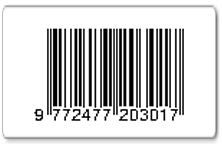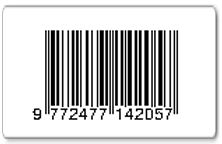The Development of Science Laboratory Safety Educational Comic for Secondary School Students in Malaysia
Abstract
The traditional method of teaching science laboratory safety often involves lengthy, complex manuals that are difficult for students to understand. Despite the existence of the School Science Laboratory Management and Safety (SLMS) guidebook, students’ knowledge and awareness of lab safety remain low. Research shows that comics can enhance students’ interest and understanding of safety protocols. This study aimed to develop a science laboratory safety educational comic for secondary school students to raise awareness about lab safety. The educational comic was developed following the analysis, design, development, implement, and evaluate (ADDIE) model, with this study focusing on the first three stages. A needs analysis involved questionnaires given to 131 students in Kuala Lumpur and Kedah, revealing a moderate awareness of lab regulations (average score: 3.53) and strong support for developing a safety educational comic (average score: 3.90). The educational comic, designed by six experts from university academic and science teachers, and illustrated by a professional illustrator, covers topics such as laboratory preparation, waste disposal, laboratory accidents, and fire extinguishers. Validation was performed by experts in materials aspect (2 education academic experts), learning aspect (2 science teachers), and media design aspect (2 art and design academic expert), with scores of 4.80, 4.85, and 4.65, respectively, indicating high qualifications. In conclusion, the science laboratory safety educational comic was found to be valid and highly effective in meeting educational standards for lab safety.
Keywords
Full Text:
PDFReferences
Adane, L & Abeje, A 2012. Assessment of familiarity and understanding of chemical hazard warning signs among university students majoring chemistry and biology: a case study at Jimma University, Southwestern Ethiopia. World Applied Sciences Journal, vol. 16, no. 2, pp. 290-299.
Akcanca, N 2020. An alternative teaching tool in science education: Educational comics. International Online Journal of Education and Teaching, vol. 7, no. 4, pp. 1550-1570.
Ali, N. L Goh, CT Zakaria, SZS Halim, S A Mokhtar, M Lee, KE & Alam, L 2018. Assessing awareness on laboratory safety: A case study in Pahang, Malaysia. Jurnal Pendidikan Malaysia, vol. 43, no. 2, pp. 73-80. doi: 10.17576/JPEN-2018-43.02-07.
Ansah, FO Assem, HD Ossei-Anto, TA Acheampong, A & Owusu, M 2024. Evaluating the Availability and Effectiveness of Safety Equipment in Chemistry Laboratories at Public Colleges of Education in Ghana. Creative Education, vol. 15, no. 10, pp. 2224-2257. doi: 10.4236/ce.2024.1510136.
Balasubramanian, N Rani, SS & Gobindgarh, P 2023. Reliability Measurements: Methods And Estimation In Healthcare Research.
Bañez, R & Mosteyro, H 2024. Evaluating the Sufficiency of Multiplicity Functions of Visual Cues in English Modules for Remote Learning: Perspective from Public Junior High School Teachers. Participatory Educational Research, vol. 12, no. 1, pp. 118-137. doi: 10.17275/per.25.7.12.1.
Bintoro, T, Lestari, I & Aini, IN 2022. Analyzing learners’ needs and designing digital comic media to improve student learning outcomes. Educational Sciences: Theory & Practice, vol. 22, no. 1, pp. 129-140.
Brown, C 2023. The Benefits of Using Comics in the Classroom. doi: 10.15760/honors.1427.
Danielsen, AK Pommergaard, HC Burcharth, J Angenete, E & Rosenberg, J 2015. Translation of questionnaires measuring health related quality of life is not standardized: a literature based research study. PloS one, vol. 10, no. 5, doi: 10.1371/journal.pone.0127050.
Di Raddo, P 2006. Teaching chemistry lab safety through comics. Journal of Chemical Education, vol. 83, no. 4, pp. 571. doi: 10.1021/ed083p571.
Doran, RL 2002. Science educator's guide to laboratory assessment: NSTA press.
Dousay, T & Logan, R 2011. Analyzing and evaluating the phases of ADDIE. Paper presented at the Proceedings from Design, Development and Research Conference.
Elangovan, N & Sundaravel, E 2021. Method of preparing a document for survey instrument validation by experts. MethodsX, 8, 101326. doi: 10.1016/j.mex.2021.101326.
Hill Jr, RH & Finster, DC 2013. Academic leaders create strong safety cultures in colleges and universities. Journal of Chemical Health & Safety, vol. 20, no. 5, pp. 27-34. doi: 10.1016/j.jchas.2013.06.011.
Hosler, J and Boomer, KB 2011. Are comic books an effective way to engage nonmajors in learning and appreciating science?. CBE—Life Sciences Education, 10(3), pp.309-317. doi: 10.1187/cbe.10-07-0090.
Humphrey, A 2020. The Pedagogy and Potential of Educational Comics. Journal of Comic Art, vol. 22, no. 2.
James, J 2005. The global digital divide in the Internet: developed countries constructs and Third World realities. Journal of information science, vol. 31, no. 2, pp. 114-123. doi: 10.1177/0165551505050788.
Joy, HE & Thomas, M 2023. Awareness On Laboratory Safety Measures Among School Students. Educational Extracts, pp. 46.
Kamarudin, N Halim, L Osman, K & Meerah, TM 2009. Pengurusan Penglibatan Pelajar dalam Amali Sains (Management of Students’ Involvement in Science Practical Work). Jurnal Pendidikan Malaysia, vol. 34, no. 1, pp. 205-217.
Kaufman, JC 2016. Creativity 101: Springer publishing company.
Kumasaki, M Shoji, T Wu, TC Soontarapa, K Arai, M Mizutani, T & Sugano, Y 2018. Presenting safety topics using a graphic novel, manga, to effectively teach chemical safety to students in Japan, Taiwan, and Thailand. Journal of Chemical Education, vol. 95, no. 4, pp. 584-592. doi: 10.1021/acs.jchemed.7b00451.
Landell, K 1997. Management by menu: London: Wiley and Sons Inc.
Li, CL & Abidin, MJBZ 2024. Instructional design of classroom instructional skills based on the ADDIE model. Technium Soc. Sci. J., vol. 55, pp. 167.
Lockhart, J 2014. Using item analysis to evaluate the validity and reliability of an existing online information literacy skills assessment instrument. South African Journal of Libraries and Information Science, vol. 80, no. 2. doi: 10.7553/80-2-1515.
Luketic, CD & Dolan, EL 2013. Factors influencing student perceptions of high-school science laboratory environments. Learning environments research, vol. 16, pp. 37-47.
Lunetta, VN Hofstein, A & Clough, MP 2013. Learning and teaching in the school science laboratory: An analysis of research, theory, and practice Handbook of research on science education, pp. 393-441.
Malaysia, KP 2010. Pengurusan dan Keselamatan Makmal Sains Sekolah: Kuala Lumpur: Pusat Perkembangan Kurikulum.
Mallia, G 2008. Learning from the sequence: The use of comics in instruction.
Man, NNSN Junus, NWM Anwar, NAK Tarmizi, RA Setambah, MAB Azmi, SH Jaafar, WNW 2023. Needs Analysis for the Development of Mathematics Neoteric Learning Module for Students in Year 2 in Number and Operation Field. Journal of Science and Mathematics Letters, vol. 11, pp. 9-22.
Mayasari, A Asrizal, A & Festiyed, F 2022. Meta analisis pengaruh media pembelajaran elektronik terhadap hasil belajar dan pemahaman konsep siswa. ORBITA: Jurnal Pendidikan dan Ilmu Fisika, vol. 8, no. 1, pp. 10-14. doi: 10.31764/orbita.v8i1.7056.
McGrath, RE 2005. Conceptual complexity and construct validity. Journal of personality assessment, vol. 85, no. 2, pp. 112-124. doi: 10.1207/s15327752jpa8502_02.
Montaña Rincón, AA 2021. Comic Strips as a Tool to Enhance Written Production at 6° Grade Students at the Educational Institution San Francisco de Asís, Cristo Rey headquarter: An Action Research.
Moreno-Vera, JR Ponsoda-López de Atalaya, S & Blanes-Mora, R 2021. By Toutatis! Trainee teachers’ motivation when using comics to learn history. Frontiers in psychology, vol. 12, pp. 778-792. doi: 10.3389/fpsyg.2021.778792.
Mustaffa, Z Hussin, Z & Sulaiman, AM 2023. Pembangunan Model Pedagogi Terbeza: Fasa Analisis Keperluan. O-JIE: Online Journal of Islamic Education, vol. 10, no. 1, pp. 30-40.
Nee, CC & Yunus, MM 2020. RollRoll dice: An effective method to improve writing skills among year 3 pupils in constructing SVOA sentences. Universal Journal of Educational Research, vol. 8, no. 6, pp. 2368-2382. doi: 10.13189/ujer.2020.080621.
Nunnally, JC 1978. An overview of psychological measurement. Clinical diagnosis of mental disorders: A handbook, pp. 97-146.
Olajumoke, S & Benjamin, A 2017. Science education undergraduate students’ level of laboratory safety awareness. Journal of Education, Society and Behavioural Science, vol. 23, no. 4, pp. 1-7. doi: 10.9734/JESBS/2017/37461 .
Olsen, W 2011. Data collection: Key debates and methods in social research.
Özdemir, E 2010. The effect of instructional comics on sixth grade students' achievement in heat transfer.
Razi, P 2024. Development of e-Module for Independent learning of Physics material based on independent curriculum. International Journal of Information and Education Technology, vol. 14, no. 5, pp. 761-769.
Ritch, D & Rank, J 2001. Laboratory safety in the biology lab. Bioscene, vol. 27, no. 3, pp. 17-22.
Shaafi, NF Yusof, M Ellianawati & Aziz, S 2023. A Study of Interest in Astronomy Among University Students in Malaysia. Jurnal Pendidikan Fisika Indonesia, vol. 19, no. 2, pp. 108-121. doi: 10.15294/jpfi.v19i2.44240.
Tilley, CL & Weiner, RG 2016. Teaching and learning with comics The Routledge companion to comics, pp. 358-366.
Toh, TL Cheng, LP Ho, SY Jiang, H & Lim, KM 2017. Use of comics to enhance students’ learning for the development of the twenty-first century competencies in the mathematics classroom. Asia Pacific Journal of Education, vol. 37, no. 4, pp. 437-452. doi: 10.1080/02188791.2017.1339344.
Tojib, DR & Sugianto, LF 2006. Content validity of instruments in IS research. Journal of Information Technology Theory and Application (JITTA), vol. 8, no. 3, pp. 5.
Trent, C & Kinlaw, R 1979. Comic books: An effective teaching tool. The Journal of Extension, vol. 17, no. 1, pp. 4.
Uyanah, DA & Nsikhe, U 2023. The theoretical and empirical equivalence of Cronbach alpha and Kuder-Richardson formular-20 reliability coefficients. International Research Journal of Innovations in Engineering and Technology, vol. 7, no. 5, pp. 17. doi: 10.47001/IRJIET/2023.705003.
Van der Elst, E Deschodt, M Welsch, M Milisen, K & de Casterlé, BD 2014. Internal consistency and construct validity assessment of a revised Facts on Aging Quiz for Flemish nursing students: an exploratory study. BMC geriatrics, vol. 14, pp. 1-9. doi: 10.1186/1471-2318-14-128.
Van Selm, M & Jankowski, NW 2006. Conducting online surveys. Quality and quantity, vol. 40, pp. 435-456. doi: 10.1007/s11135-005-8081-8.
Walters, AU Lawrence, W & Jalsa, NK 2017. Chemical laboratory safety awareness, attitudes and practices of tertiary students. Safety science, vol. 96, pp. 161-171. doi: 10.1016/j.ssci.2017.03.017.
West, DM 2015. Digital divide: Improving Internet access in the developing world through affordable services and diverse content. Center for Technology Innovation at Brookings, 1, 30.
Willson, S & Miller, K 2014. Data collection. Cognitive interviewing methodology, pp. 15-33. doi: 10.1002/9781118838860.ch3.
Wu, G Yang, Y & Xu, C 2023. Determination of university students’ laboratory safety awareness: A cross-sectional study. Journal of Chemical Education, vol. 100, no. 9, pp. 3402-3409.
Wyk, MM 2011. The use of cartoons as a teaching tool to enhance student learning in economics education. Journal of Social Sciences, vol. 26, no. 2, pp. 117-130.
DOI: http://dx.doi.org/10.30870/jppi.v11i1.29217
Refbacks
- There are currently no refbacks.
Copyright (c) 2025 Jurnal Penelitian dan Pembelajaran IPA

This work is licensed under a Creative Commons Attribution 4.0 International License.
Jurnal Penelitian dan Pembelajaran IPA is licensed under a Creative Commons Attribution 4.0 International License
Copyright © 2025 Jurnal Penelitian dan Pembelajaran IPA. All rights reserved.






